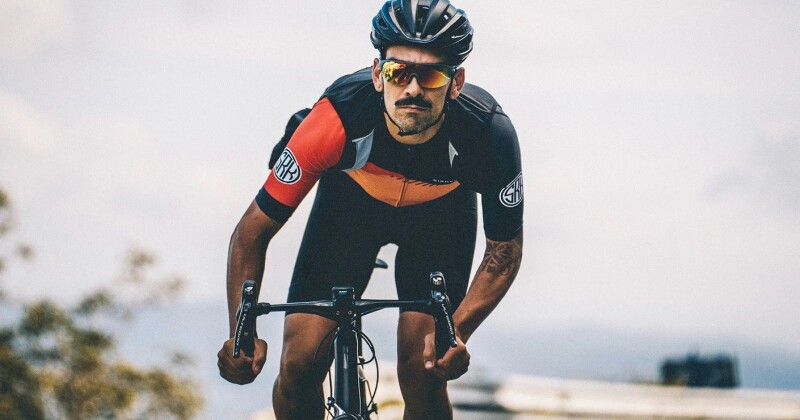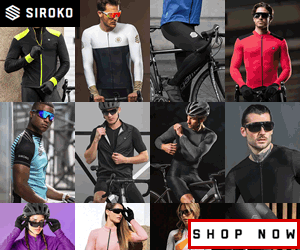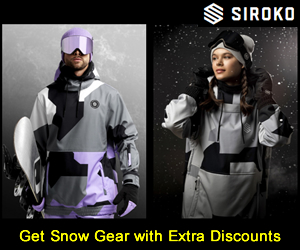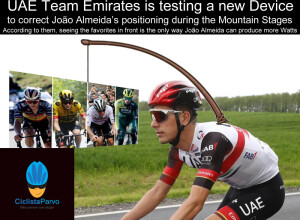Siroko Tech (Spain) - Press Release: Choosing the right size of cycling apparel is vital as it guarantees top performance of our garments: comfort, breathability, insulation and ease of body movement at the same time.
As shopping online is gaining in popularity, knowing our measurements becomes crucial since we do not have the chance to try on clothes in a physical store. In order to answer the question "What is my size?" as accurately as possible, you need to know your current body measurements. It may seem like a lot of hassle but it is better to take a few minutes to measure yourself than to buy the wrong size and have to return it.
How to take your measurements?
To take your measurements you will need a sewing tape measure. If you don't have one, you can use a regular measuring tape or a ruler as a last resort, but it is not recommended.
A pencil and a piece of paper will come in handy to write down your measurements. You can also use your smartphone to take notes of the measurements and always have them at hand.
You should take your measurements with your clothes off. Do not do it with a jersey or a jacket on because you will surely end up choosing a size that's too big for you.
The sewing tape measure should fit closely around your body. Do not tighten it too much or let it be too loose.
What should you measure?
There are three main measurements: chest, waist and hips. The first two plus your torso length will help you choose garments such as a jersey, base layer, vest or jacket. The last two plus the length of your inseam (inside leg) are the measurements you need for bib shorts.
- To measure your chest, place the tape under your armpit at the widest part of the chest. For women, the tape measure should go over the nipples, never under or over the breasts.
- To measure your waist, measure yourself at the midpoint between the costal margin (rib cage border) and the upper edge of the iliac crest. For some people this point matches the navel, for others the navel is 2-3 centimeters below.
- To measure your hips, close your legs and measure the circumference at the widest part of your buttocks.
- To measure the torso length, start measuring where the shoulder meets the neck and measure down to the hips level. This is a secondary measurement that can serve as an indication of how far the garment will reach. Keep in mind that on the bike you lean forward and cycling jerseys, jackets, etc., have a drop tail, meaning that the back is slightly longer than the front.
- To measure the inseam, take a book and squeeze it between your thighs, the book reaching your crotch. Measure from the upper edge of the book to 4-5 cm above the knee. This is also a secondary measurement that can serve as an indication of how far your bib shorts will go. Keep in mind that there are bib shorts that cover less thigh, and longer ones that cover the thigh almost until the knee.
These are the most important measurements. Once you have them, check the brand’s size chart to compare them with the product, taking into account these details:
- Cycling apparel in general, and garments such as bib-shorts in particular, offers high elasticity and resistance. This allows for a certain margin in choosing the size.
- Fabrics do not shrink by nature. If your measurements are between two sizes, always choose the smaller size. You won't regret it because cycling clothing has to fit snugly. Unless you like a loose fit, if you buy big you're sure to regret it.
- The fabric matters. The blend and composition of the fabric determines its elasticity and fit. As you know, lycra is more elastic than merino wool.
- Some garments go on top of others. If you choose a size that is very tight, you might feel excessively constricted. Example: a windproof cycling vest that goes on top of a jersey and a base layer.
Finally, here is one last important point for you to keep in mind:
Within one brand there are several collections of the same type of garment, such as cycling jerseys, each one offering a different fit. The same happens with jeans: you can find regular, slim, relaxed, skinny, super skinny, etc. In cycling apparel you can also find different cuts and patterns that offer different fits.
The most common names are Active Fit, Performance Fit, Sport Fit, Pro Fit...it's a mess. The key is to look at the differences between collections described by the brand to see what kind of fit they offer. For instance, at Siroko we currently have two collections of cycling jerseys: M2 and SRX. Both offer Race Fit with a close-fitting cut, but SRX is a higher-end line than M2, hence its fabric and cut offer a better fit and more lightness.




























Interested? Submit your enquiry using the form below:
Only available for registered users. Sign In to your account or register here.